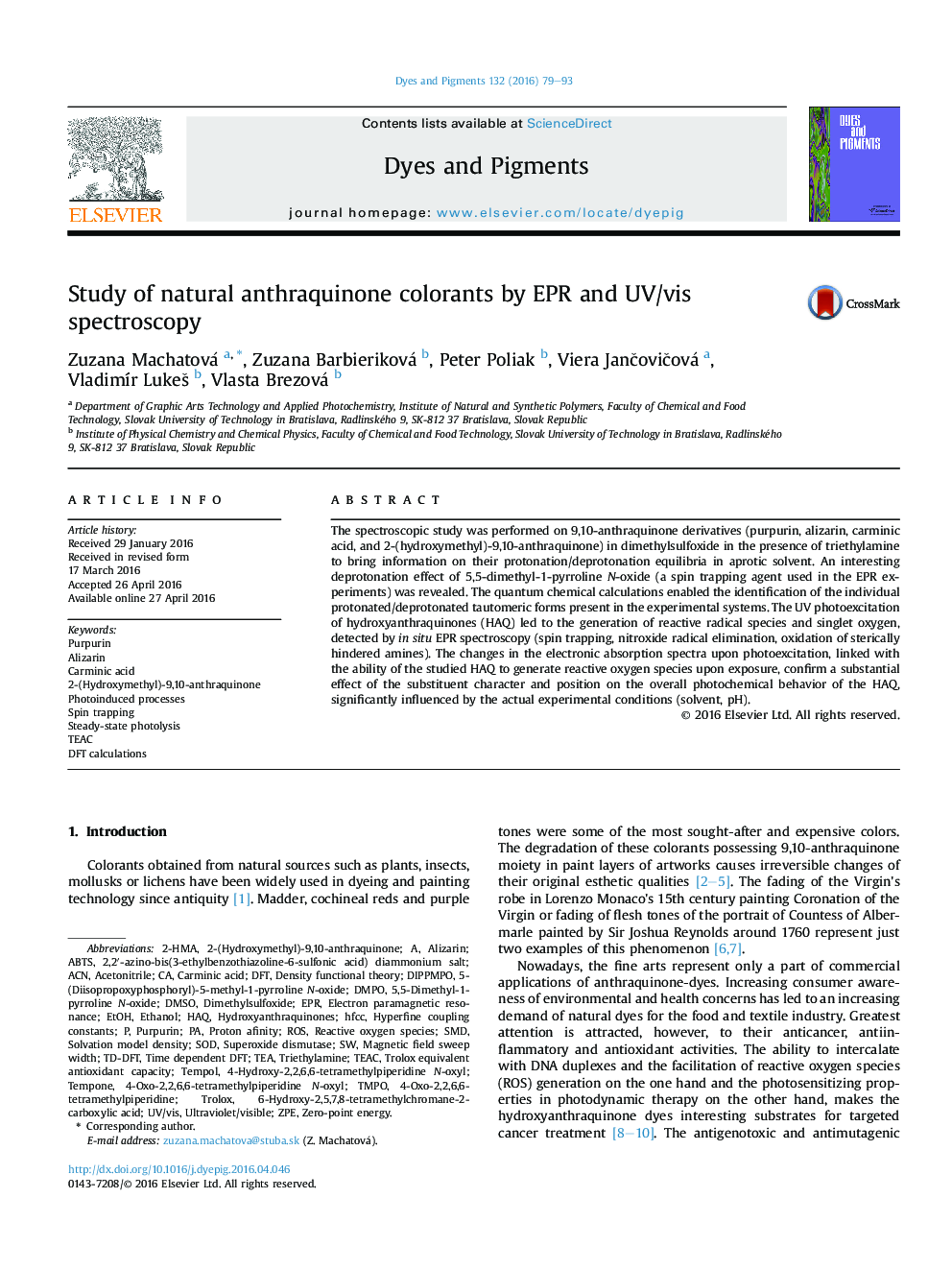| Article ID | Journal | Published Year | Pages | File Type |
|---|---|---|---|---|
| 175321 | Dyes and Pigments | 2016 | 15 Pages |
•Spectroscopic and theoretical study of 9,10-anthraquinone derivatives.•Protonation/deprotonation equilibria of hydroxyanthraquinones in aprotic solvent.•Reactive oxygen species generation upon UVA photoexcitation of 9,10-anthraquinones.•Photodegradation of hydroxyanthraquinones in protic/aprotic solvents.
The spectroscopic study was performed on 9,10-anthraquinone derivatives (purpurin, alizarin, carminic acid, and 2-(hydroxymethyl)-9,10-anthraquinone) in dimethylsulfoxide in the presence of triethylamine to bring information on their protonation/deprotonation equilibria in aprotic solvent. An interesting deprotonation effect of 5,5-dimethyl-1-pyrroline N-oxide (a spin trapping agent used in the EPR experiments) was revealed. The quantum chemical calculations enabled the identification of the individual protonated/deprotonated tautomeric forms present in the experimental systems. The UV photoexcitation of hydroxyanthraquinones (HAQ) led to the generation of reactive radical species and singlet oxygen, detected by in situ EPR spectroscopy (spin trapping, nitroxide radical elimination, oxidation of sterically hindered amines). The changes in the electronic absorption spectra upon photoexcitation, linked with the ability of the studied HAQ to generate reactive oxygen species upon exposure, confirm a substantial effect of the substituent character and position on the overall photochemical behavior of the HAQ, significantly influenced by the actual experimental conditions (solvent, pH).
Graphical abstractFigure optionsDownload full-size imageDownload as PowerPoint slide
